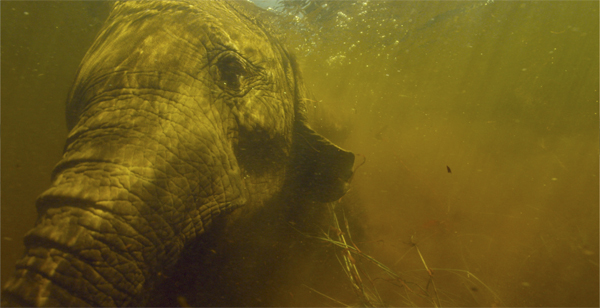There is nowhere on the planet quite like Africa, and this spectacular documentary takes viewers to a part of it, which remarkably has remained largely unexplored. That would be the heart of the Okavango Delta in the central part of the continent, a vast maze of lagoons and channels that measures as large as 22,000 kilometers and is surrounded on all sides by desert. According to Dr. Steve Boyes, an ornithologist from South Africa, the mass of waterways is starting to shrink and the dry areas are closing in.
In order to save the delta, Boyes needs to figure out exactly how it works, and so he leads an expedition to find its source, which is somewhere in Angola. His plan is to follow the Cuito River, a major artery that also crosses Namibia and ends in Botswana. The estimate for the entire mission is four months, and in the spirit of making it a joint international effort, Boyes enlists crew members from several nations, most notably Adjany, a biologist from Angola, and Water, a jack-of-all-trades who has lived in the delta his entire life.
Things go well early on as they find the water source, but complications quickly set in. The first surprise is that the section of Cuito River they’re on becomes a tiny stream, making their canoes useless. Days pass before they can row again, and then they reach an area in which the vegetation is overgrown, making the waterway virtually impassable. This early period tests the group’s endurance, although they also make a few unprecedented scientific discoveries along the way, which seem to excite director Neil Gelinas as much as the physical challenges.
Once past these hurdles, the film settles into the rhythms of a road movie, alternating between the protagonists’ encounters with strangers and sharing their thoughts. The former includes a tribe that sets wildfires for hunting, which are, in turn, causing serious damage to the larger ecosystem. Boyes and company are not seen preaching to the locals that they must change their ways. They have quite a bit of empathy instead, with one crew member observing that his village once did the same thing.
Every member of the team has a unique backstory and engaging personality, especially Water, who never fails to have an upbeat attitude and reveals impressive resourcefulness. Adjany, who at times longs for the comforts of civilization, proves to be far from a wilting flower. Indeed, after the group arrives at the site of elephant poaching, she, having lived through the Angolan Civil War as a child, nonchalantly comments that it smells like dead bodies.
Meanwhile, Boyes hardly embodies the cliché of the megalomaniacal explorer. He seems highly thoughtful, especially when things are not going well. There’s also an unexpectedly touching scene in which he laments how this mission has taken him away from his young son, who is undoubtedly experiencing milestones without him.
Through it all, the film contains incredible photography from beneath the surface of the Cuito, including shots of crocodiles swimming gracefully and elephants floating nimbly despite their size. On land, the tone is less dreamlike, more immediate, with Gelinas frequently following a short distance behind members of the expedition, making the viewer feel like they are one of the crew. However, being in the thick of the action as it unfolds leads to a few unnerving moments, such as when an impromptu animal attack sends the cameraperson headfirst into the river.
There aren’t a lot of hair-raising moments otherwise, as down the stretch, Into the Okavango is largely content to inspire with its theme of Earth as an interconnected organism, much as the delta is. Gelinas and Boyes are quite earnest in hammering home the idea that even the smallest of creatures plays an important role, but given everything they’ve been through, their enlightened point of view seems well-earned. Our reward, in the meantime, is a glimmer of hope that the delta may yet endure, and with it a chance to see its wonders in person.







Leave A Comment